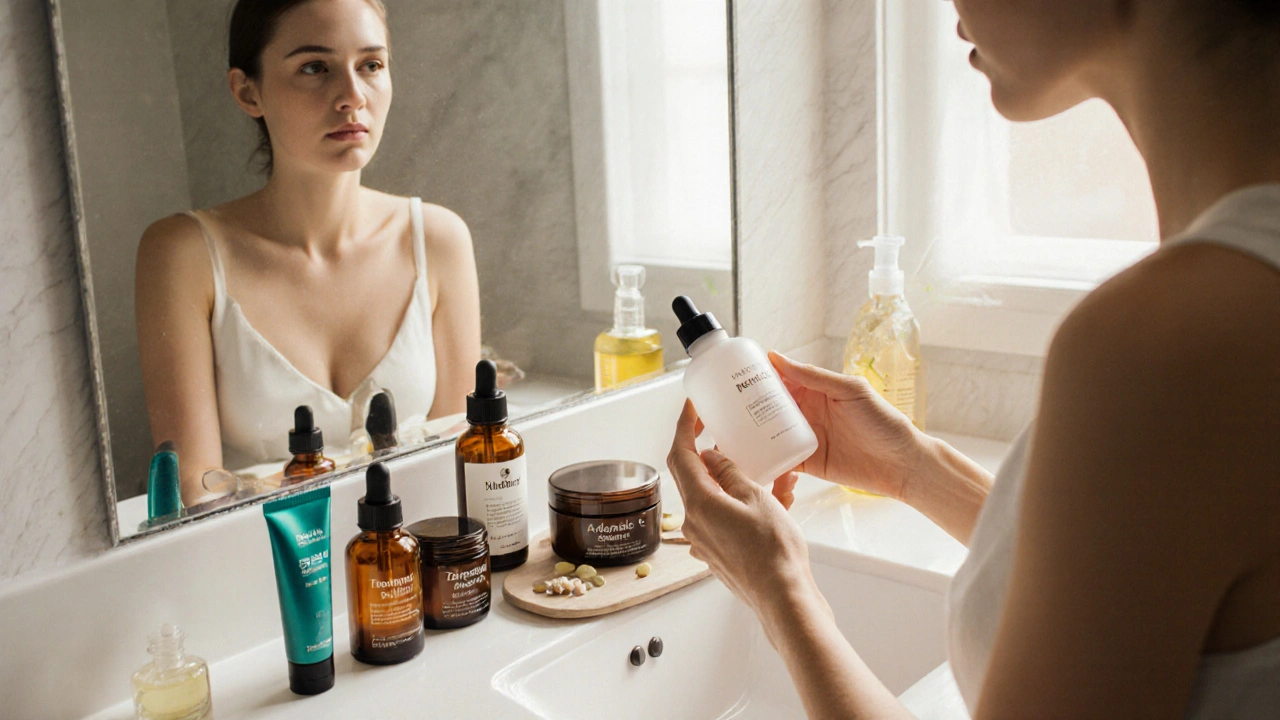Best Retinoid: What Works and How to Choose
If you’ve tried creams, serums, and pills to smooth wrinkles or clear acne, you’ve probably heard the word “retinoid.” It’s a family of vitamin A derivatives that speed up skin turnover, fade dark spots, and boost collagen. The trick is picking the right strength and form for your skin type without causing irritation.
Retinoids come in two main camps: prescription‑only and over‑the‑counter (OTC). Prescription options like tretinoin, adapalene 0.1%, and isotretinoin are the strongest and work fastest, but they need a doctor’s ok. OTC choices such as retinol, retinaldehyde, and bakuchiol are milder, good for beginners, and can be found in many drugstore shelves.
Top Retinoid Options
Tretinoin (Retin‑A) is the gold‑standard prescription retinoid. It clears acne, smooths fine lines, and improves texture in 8‑12 weeks when used consistently. Start with a pea‑size amount at night, and mix with a moisturizer if your skin feels dry.
Adapalene (Differin) sits in the middle. It’s now available OTC at 0.1% and works well for acne‑prone skin. Its chemistry makes it less irritating than tretinoin, so many people can jump straight in.
Retinol is the most common OTC ingredient. It converts to active retinoic acid inside the skin, so the effect is slower but still solid for anti‑aging. Look for products with 0.3%–1% concentration and pair with a good sunscreen.
Retinaldehyde is a step up from retinol. It needs only one conversion step, so it’s stronger while staying gentler than tretinoin. It’s a good bridge if retinol feels too light.
Bakuchiol is a plant‑based alternative that mimics retinoid benefits without the typical redness. It’s a solid pick for sensitive skin, though the research is still catching up.
How to Use Retinoids Safely
Start slow. Apply a thin layer once or twice a week and watch how your skin reacts. If you notice peeling or redness, wait a few days before the next application. Gradually increase to every other night, then nightly if tolerated.
Always use sunscreen in the morning. Retinoids thin the top skin layer, making you more vulnerable to UV damage. A broad‑spectrum SPF 30 or higher is non‑negotiable.
Moisturize well. The “sandwich” method—moisturizer, retinoid, moisturizer—helps lock in moisture and reduces irritation. Look for ceramide‑rich creams or products with hyaluronic acid.
Don’t mix retinoids with other strong actives like alpha‑hydroxy acids (AHA) or benzoyl peroxide in the same routine. If you need both, use them at opposite times of day (e.g., retinoid at night, AHA in the morning).
If you’re pregnant, nursing, or have certain skin conditions, skip retinoids unless your doctor says it’s safe. Some retinoids can cause birth defects, so a medical green light is essential.
Finally, be patient. Visible results usually appear after 6‑12 weeks of consistent use. Stick to the routine, protect your skin from the sun, and you’ll notice smoother texture and fewer breakouts.
Ready to try a retinoid? Check the articles under the “best retinoid” tag for detailed reviews of specific products, dosage tips, and real‑world experiences. Pick the one that matches your skin’s needs, follow the safe‑use guide above, and watch your skin improve over time.

Retin‑A 0.05% (Tretinoin) vs. Top Skin‑Care Alternatives
A detailed comparison of Retin‑A 0.05% (tretinoin) with common alternatives like adapalene, tazarotene, retinol, azelaic acid, and vitaminC, covering effectiveness, cost, side effects, and who should use each.
